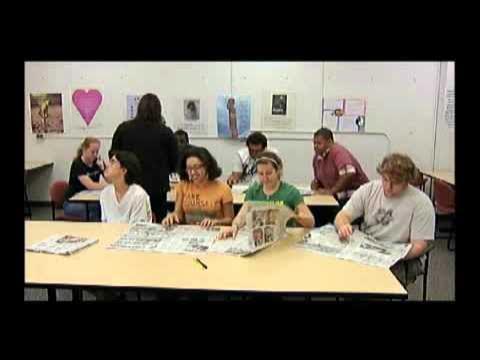Dr Bill Rogers - Students who just say "NO"
Summary
TLDRIn this educational scenario, a teacher faces the challenge of a student refusing to comply with classroom rules. The transcript details an incident where a student, Harmony, initially resists putting away her phone during a lesson. The teacher, using a combination of clear communication, patience, and adherence to school policy, navigates the situation. The teacher emphasizes the importance of addressing primary behaviors over secondary reactions and offers the student a choice to comply with the rules. If the student continues to refuse, the teacher makes the consequences clear, choosing to follow up after class rather than escalating the situation. The narrative highlights the teacher's strategy of ignoring secondary behaviors and focusing on resolving the primary issue, which is a common approach in managing challenging student interactions.
Takeaways
- 📚 When a student refuses to follow instructions, it's crucial for a teacher to address the primary behavior rather than secondary reactions like sighing or eye-rolling.
- 👉 In a classroom management situation, providing a student with a directed choice can be an effective strategy, such as offering to put a mobile phone away or leave it on a teacher's table until break time.
- 📱 It's important for teachers to be consistent with school rules, such as mobile phone policies, and not to be swayed by a student's claim that 'other teachers allow it'.
- 🕒 Teachers should give students 'take-up time' to consider their choices and actions, which can lead to the student complying with the request.
- 🤔 Ignoring secondary behaviors like flouncing or huffing and puffing is a tactical approach to maintain control and focus on the primary issue at hand.
- 👀 A confident teacher learns to discriminate between what is primary and secondary in an exchange, especially during a conflict with a student.
- 🔄 If a student still refuses to comply after being given time and clear consequences, it's important to follow up and enforce the rules at an appropriate time.
- 🚫 Teachers should avoid immediate confrontations and instead leave students with the consequences of their choices, unless it's a safety issue that requires immediate action.
- 👶 The approach of leaving students with the consequences of their choices is more suitable for older students rather than younger ones, like 5-year-olds.
- 🏫 The transcript highlights the importance of maintaining respect and confidence in the classroom, even when dealing with challenging students.
Q & A
What is a common challenge teachers face when a student refuses to follow instructions?
-A common challenge is when a student says 'no' or refuses to move or comply with a teacher's request, as illustrated by the situation with Harmony in the transcript.
What was the situation described in the transcript involving a student named Harmony?
-Harmony was talking loudly on her phone during a group activity, and when asked to put the phone away, she initially refused and claimed it was a job placement call.
How did the teacher initially handle Harmony's refusal to put her phone away?
-The teacher gave Harmony a brief statement about the school's rule regarding mobile phones and allowed her some time to respond, rather than immediately insisting on compliance.
What does the transcript suggest about the importance of addressing primary behavior over secondary reactions?
-The transcript suggests that teachers should focus on the primary behavior that is causing the issue, such as using a phone in class, rather than getting distracted by secondary reactions like eye-rolling or sighing.
What is the concept of 'tactically ignoring' as mentioned in the transcript?
-Tactically ignoring refers to the strategy of not responding to secondary behaviors like flouncing or being overly dramatic, in order to maintain focus on the primary issue at hand.
Why did Harmony claim that the teacher Lindsay didn't care about the phone rule?
-Harmony claimed that Lindsay didn't care about the rule as a way to challenge the authority of the teacher who was trying to enforce it, which is a common tactic used by some students.
What is a 'directed choice' as used in the context of the transcript?
-A 'directed choice' is a clear option given to a student to resolve a situation, such as putting a phone in a bag or leaving it on a teacher's table until break time.
How does the transcript describe the importance of following up with consequences for student behavior?
-The transcript emphasizes that if a student continues to refuse to comply, the teacher should make the consequence clear and follow up on it, reinforcing the importance of rules and expectations.
What is the significance of 'take-up time' mentioned in the transcript?
-Take-up time refers to the period a teacher gives a student to process the situation and make a decision, which can be an effective strategy in managing classroom behavior.
How does the transcript differentiate between handling behavior in younger versus older students?
-The transcript suggests that while immediate consequences might be appropriate for younger students, older students, such as those in upper primary and secondary levels, can be given deferred consequences to teach them about the outcomes of their choices.
What does the transcript imply about the importance of consistency among teachers in enforcing rules?
-The transcript implies that consistency among teachers in enforcing rules is crucial, as students may use leniency from one teacher as leverage against another.
Outlines

This section is available to paid users only. Please upgrade to access this part.
Upgrade NowMindmap

This section is available to paid users only. Please upgrade to access this part.
Upgrade NowKeywords

This section is available to paid users only. Please upgrade to access this part.
Upgrade NowHighlights

This section is available to paid users only. Please upgrade to access this part.
Upgrade NowTranscripts

This section is available to paid users only. Please upgrade to access this part.
Upgrade Now5.0 / 5 (0 votes)





